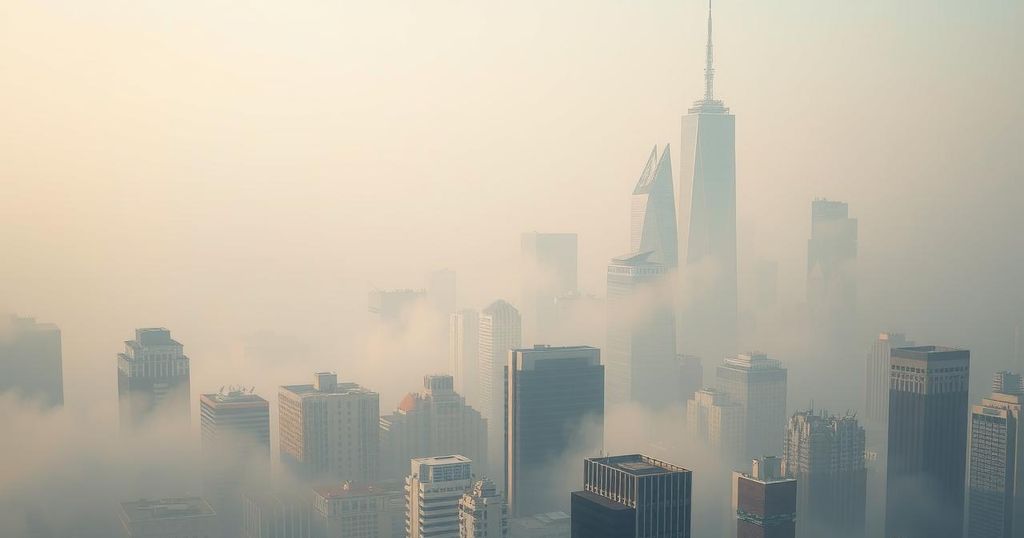In 2024, Pakistan was reported as the third most polluted country globally, facing a severe smog crisis impacting public health, with 70% of citizens suffering health issues. The average PM2.5 levels were measured at 73.7 µg/m³, drastically exceeding safe limits, with major cities like Lahore and Peshawar among the most affected. Urgent policy reforms are needed to combat rising pollution levels.
In 2024, Pakistan has been ranked as the third most polluted country globally, as indicated in a recent air quality report. The nation is grappling with a severe smog crisis that has dramatically affected public health, with cities such as Lahore, Multan, and Peshawar being particularly hard hit. Research reveals that approximately 70% of the population is experiencing health issues linked to smog, prompting a call for immediate policy interventions.
According to the 2024 World Air Quality Report by IQAir, Pakistan’s pollution levels are second only to Chad and Bangladesh, with its average PM2.5 concentration recorded at 73.7 micrograms per cubic meter (μg/m³), which is nearly 15 times above the World Health Organization’s safe limits. Following Pakistan in the pollution rankings are the Democratic Republic of Congo and India, indicating a concerning trend in global air quality.
In 2023, the smog crisis in Punjab reached alarming levels, compelling authorities to declare it a calamity. Nearly two million individuals sought medical attention for illnesses related to pollution. In response, the government implemented lockdowns and closed schools in severely impacted regions. Despite the worsening smog conditions in Punjab, overall pollution levels remained consistent with the previous year.
The report identified several cities in Pakistan, including Lahore, Multan, Peshawar, and Sialkot, as some of the most polluted in Central and South Asia, ranking just below Bangladesh. Contributing factors to the high pollution levels include biomass burning, industrial activities, vehicular emissions, and dust from construction sites. Notably, five cities in Pakistan exceeded PM2.5 levels of 200 μg/m³ in November 2023, indicating a grave environmental health threat.
While cities such as Peshawar, Islamabad, Rawalpindi, and Lahore saw a deterioration in air quality compared to 2023, Karachi experienced a slight improvement with PM2.5 levels dropping to about 46 μg/m³. Nevertheless, a survey by Ipsos highlighted that around 70% of Pakistan’s citizens are facing health issues related to the prevailing smog, underscoring the urgent need for systemic reforms to address the air quality crisis and safeguard public health.
In summary, Pakistan’s alarming rank as the third most polluted country in 2024 highlights the immediate health risks associated with the persistent smog crisis. The significant concentration of PM2.5 and the reported health issues affecting a large portion of the population necessitate urgent governmental response and policy reform to mitigate this environmental catastrophe. Moreover, regional comparisons underscore the chronic nature of pollution in Pakistan, further emphasizing the critical need for collective action to improve air quality and public health.
Original Source: www.republicworld.com




